Leverage the power of your data
Too many marketers are spending vast amounts of ad spend to essentially learn about how their campaigns should work. Why not rethink your approach and use your existing data to transform your paid activity and enhance your return on investment.
The problem with paid content distribution
A campaign manager for a major sportswear retailer is looking at the brand’s customer base, eCRM insight and its demographic profile data. Amongst this data, they identify that a large proportion of their customers has a keen interest in football shirts. It’s the peak season for new shirts being released from all of the major football clubs, so this is a prime moment to be launching paid social and retargeting campaigns for the latest football strips. The retailer starts the campaign, and throws a significant investment behind it – in terms of both content and ad spend.
However, there is a problem. The content and imagery for this campaign prominently features the new shirt for Manchester United, yet the campaign actually reaches supporters of Manchester City, Liverpool and Arsenal. In fact, it reaches supporters of all of the other 19 Premier League clubs. As a result, the campaign misses its target, and huge sums are invested in targeting users with an ad that not only failed to appeal, but actively disengages those audiences.
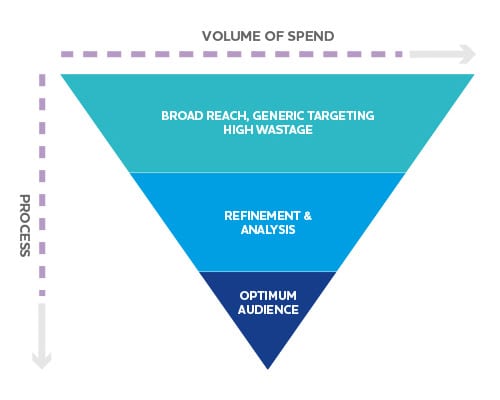
That might sound like a simplistic and extreme analogy, but many advertisers are doing exactly this with their paid content, social advertising and retargeting campaigns.
It is a problem that has its roots in brands struggling to use their first party data effectively prior to deploying paid activity. This results in brands spending the greatest proportion of their ad spent on targeting incredibly wide audiences on generic terms until, eventually, they find their optimum audience.
The key to better campaigns? Your audience data
The good news is that your brand should have existing data to hand that can address this problem, transform your approach to paid activity and enhances your return on investment.
Using raw data from your CRM database and remarketing tags, and applying some basic levels of audience insights, you can transform your strategic output, segment your customer base and create new strategies for your paid activity.
Going through this process will allow you to identify demographic or behavioural trains that are intrinsically linked, and then group these into target personas. These personas can then be segmented and built into incredibly granular targeting pools.
The result is a much more efficient may of running paid ad and content distribution campaigns.
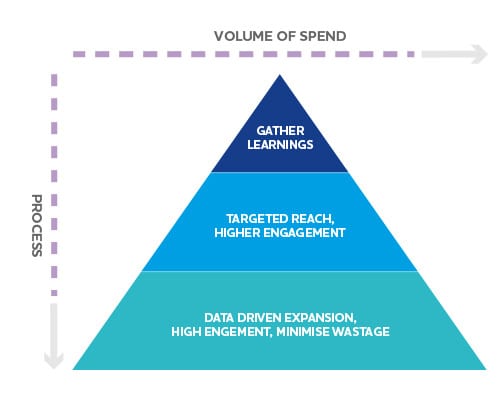
In this more efficient model, a very small level of the campaign resource (namely, time and budget) has been invested in understanding the audience at the very beginning of the campaign. Gathering the learnings from this insight ensures that you can target a more relevant audience to drive stronger engagement.
From this, we can develop the campaign by expanding the target audience with lookalike data. This data comes primarily through social networks, particularly Facebook, which allows advertisers to import CRM data of their target audiences. Facebook then identifies audience groups and segments that share the same behavioural, demographic and socio-economic traits as your most currently engaged audience groups.
Step 1: Building your audience personas
If you want to get your content to an audience, you need to know where that audience resides online (in other words, where they are digitally active) and how they engage with brands. Without this insight, paid content distribution can be a costly exercise.
The importance of personas
Your eCRM data provides you with a huge amount of data on your existing audiences, including your regular customers, your big spenders and your dormant account holders. By segmenting these audiences, you can create a clear picture of your core customer base and your target audience.
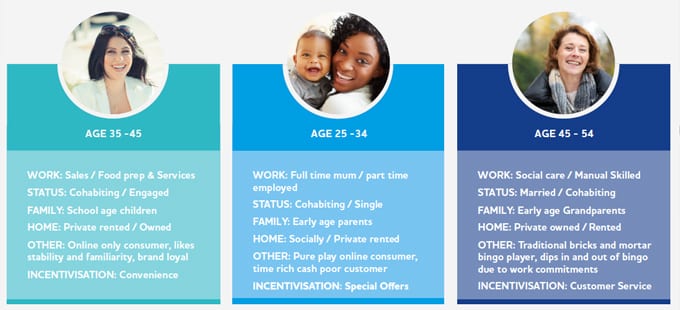 This process allows you to spot clear demographic traits between audience groups and, most importantly, allows you to understand what is likely to trigger them into performing a positive consumer action. These key incentivisation points will ultimately dictate which messaging is targeted to each audience group, and at which point in the buying process.
This process allows you to spot clear demographic traits between audience groups and, most importantly, allows you to understand what is likely to trigger them into performing a positive consumer action. These key incentivisation points will ultimately dictate which messaging is targeted to each audience group, and at which point in the buying process.
Introducing lookalike marketing
Using sophisticated lookalike technology, combined with further audience insights tools based on engaged users, it is possible for a brand to grow its audience extremely quickly.
Using the traits identified from your first party data, it is possible to use Facebook’s advertising interface to find audiences that share the exact same or similar demographic profiles and behavioural traits as your current audiences, as identified by the data held by Facebook.
This method delivers ads to the social profiles of users who are more likely to engage with a brand’s content. This has the potential to significantly reduce the volumes of wasted ad spend.
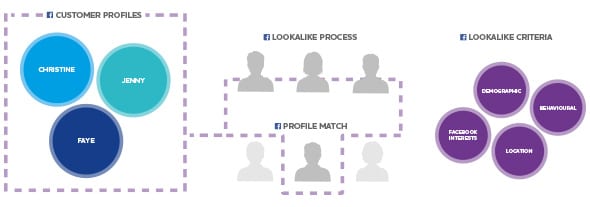
Step 2: Segmenting your audience
Having identified where the opportunities to grow your audience are, you now need to segment them. This is where your retargeting activity becomes increasingly powerful.
Let’s go back to our football shirt analogy from earlier. That situation is a result of broad customer segmentation and broad content messaging. It is something that, through the correct use of retargeting tags, is easily addressed.
By creating much more detailed and granular audience segmentation buckets, based on both demographic – activity behaviour, we can ensure that any retargeting message is optimised for that audience based on the behaviour traits that we would expect for that group.
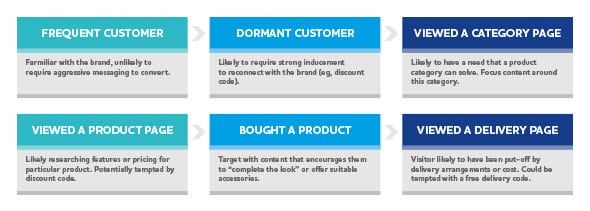
This level of segmentation can be applied to almost any form of customer activity. For instance, travel companies can assign different segments for users that searched for different classes of aircraft cabin or hotel, ensuring that those that searched for premium class flights or five star accommodation aren’t being served content that leads with budget pricing.
This level of granularity has the power to transform your content distribution strategy into a channel that can really deliver significant return on investment.
Step 3: Turning content into acquisition
This level of segmentation takes significant ‘guesswork’ out of paid content distribution, ensures that a brand’s ad budget is directed only at audiences that will drive acquisition, and only in ways that will most effectively engage those audiences. It ensures that only those customers that may welcome a ‘harder-sell’ message are exposed to it, whilst those that prefer less aggressive messaging are not exposed to overtly sales-heavy content.
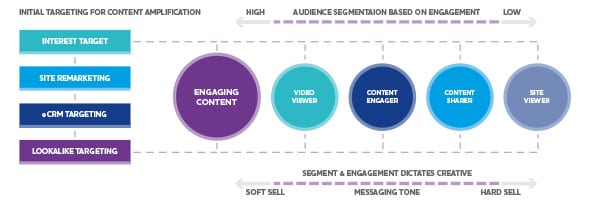
This means that ad spend can be directed on growing and reaching audiences that are directly aligned to the overall business objectives, that spend isn’t wasted on audiences that you are unlikely to convert, and that your return on investment on paid content distribution is vastly improved.
Five takeaways you can use right now
Rethink your approach
Too many marketers are spending vast amounts of ad spend to essentially learn about how their campaigns should work. This means that budget isn’t being utilised effectively and isn’t delivering a return on your investment. There are better ways to learn about your audience without utilising your ad budget.
Get stuck into your customer data
One of those better ways is to dive into your first party data. Your customer data provides you with an unrivalled level of insight into who your customers are, how they behave and why they interact with your brand.
Understand your audience
Using this data, you can build a clear picture of your most engaged customer groups, your most profitable customer groups and the customer groups that have left your brand.
Grow your audience reach
It’s highly likely that the audiences that you want to reach share the same behavioural and demographic traits as the audiences that you are already reaching. By performing lookalike matching on your current audience groups, you can identify a potentially huge target audience for your brand to target.
Target them with the right content
Understand how those audiences interact and engage with your content, and retarget them with something that is relevant. The more granular your customer segmentation is, the more effective this retargeting will be.
For a quick and easy guide to optimising your social strategy request our ebook now and start driving ROI from social.

Thanks to
Tony Booth for sharing their advice and opinions in this post.
Tony Booth is Head of Biddable Media and PPC at independent digital marketing agency
Stickyeyes. He has a wealth of experience on Google, Yahoo and Bing as well as the management of campaigns on social and 3rd party re-marketing platforms.









 Thanks to
Thanks to 


